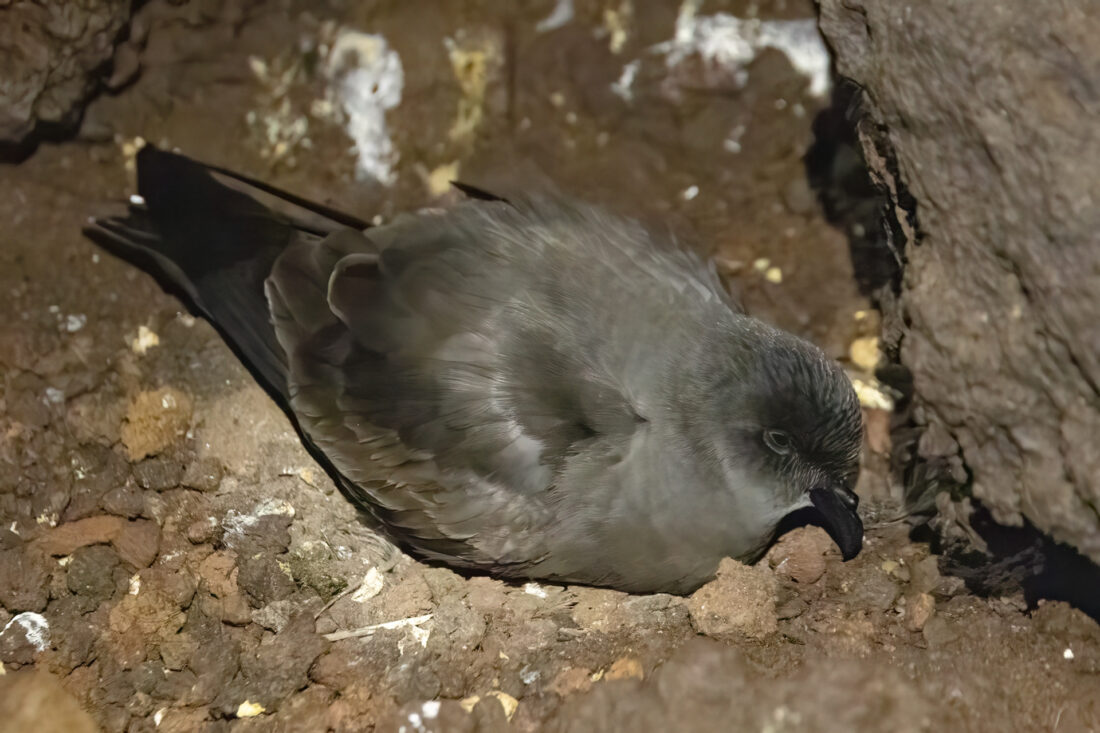Ainley’s Storm-Petrel

Status: IUCN Not assessed
Spanish Name: Petrel de Tormenta de Ainley
Scientific Name: Hydrobates cheimomnestes
Family: Hydrobatidae
Population: Ainley’s Storm-petrel is critically endangered and is one of the rarest seabirds in the world. The only known breeding colony is located on a tiny islet (Islote Moro Prieto) off Isla Guadalupe, Mexico, and is thought to number about 500 individuals. Outside the breeding season, it ranges along the west coast of Mexico south to Galapagos, and perhaps as far north as southern California.
Feeding: Like other storm-petrels, they forage by grabbing small prey items from the ocean surface, and they often “step” on the water surface with their feet, which may attract small animals. The diet probably includes small fish, squid, and crustaceans.
Breeding: Ainley’s Storm-petrels are winter breeders, laying eggs from December through February, with chicks fledging by May. They are active at the colony night, nesting in rock crevices or burrows that they excavate under vegetation such as naupaka.
Life Cycle: Like most storm petrels, the age at first breeding is thought to be three to five years and the lifespan is likely between 15 and 20 years.
Taxonomic Information: Ainley’s Storm-petrel was formerly considered to be a subspecies of Leach’s Storm-petrel but was split recently. It is very similar to Townsend’s Storm-petrel, which also was split recently from Leach’s and also nests on Islote Moro Prieto, but in the summer months.
Threats and Conservation: The only known colony is threatened by chronic predation from Burrowing Owls, and the population is thought to be less than 500 birds and declining. Attempts to establish a colony on Isla Guadalupe by social attraction have not been successful.
PRC and ‘Akihike’ehi’ale: In collaboration with partners in Mexico, in 2024 we will begin translocating Ainley’s Storm-petrel chicks from Islote Moro Prieto to a location on Isla Guadalupe inside a cat exclusion fence and where owls are rare. We will raise the chicks by hand until they fledge, with the expectation that they will return as adults to the site where they were raised.
Sources: Grupo de Ecología y Conservación de Islas unpubl data.
